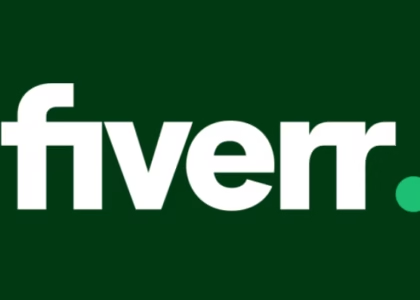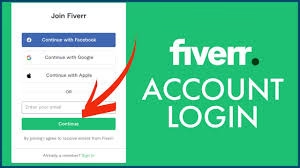PBN Links Welcome to the underground world of PBNs—one of SEO’s most debated and powerful tactics. Whether you’re a seasoned digital marketer or a curious newbie, this article is your go-to resource for everything you need to know about PBN links in 2025. Let’s break it down step by step.
What are PBN Links?
Definition of a PBN (Private Blog Network)
A Private Blog Network, or PBN, is a collection of authoritative websites that are created and controlled by one individual or company with the intent of building backlinks to a main site—often referred to as the “money site.” These backlinks are meant to boost the target site’s rankings on search engines like Google.
How PBNs Work in SEO
The idea is simple: Google loves backlinks from high-authority websites. So if you own a bunch of aged, high-DA sites, you can use them to link back to your own site, giving it a credibility boost in the eyes of search engines. It’s like giving your site a bunch of five-star reviews—from yourself.
The History and Evolution of PBNs
Early Days of SEO and Link Building
Back in the early 2000s, SEO was the Wild West. Ranking high in search results was more about quantity than quality. Link farms, keyword stuffing, and directories ruled the game.
Rise of PBNs and Google’s Response
As Google’s algorithm matured, it began rewarding quality over quantity. This led to the rise of PBNs—sites that looked real but were really controlled for SEO gains. Google responded with algorithm updates like Penguin, cracking down on link schemes and penalizing suspicious networks.
Why Do SEOs Use PBN Links?
The Power of High Authority Backlinks
PBNs allow you to tap into the authority of aged domains. A backlink from a site with strong trust metrics (like DA 40+, DR 50+) can supercharge your rankings faster than most white-hat methods.
Full Control Over Anchor Text and Link Placement
Unlike outreach where you’re at the mercy of another webmaster, with PBNs you call the shots. You choose the anchor text, page, placement, and timing of every link.
Pros and Cons of PBN Links
Benefits of Using PBN Links
- Quick Ranking Boosts: Great for new sites needing traction.
- Niche-Relevant: You can build blogs tailored to your niche.
- Full Control: No waiting around for outreach replies.
Risks and Penalties Associated with PBNs
- Google Penalties: If detected, your site can be deindexed.
- Time-Consuming: Building and maintaining PBNs takes effort.
- Costly: Quality expired domains and hosting add up.
Building Your Own PBN – A Step-by-Step Guide
Step 1: Finding Expired Domains
Look for domains with clean backlinks using tools like Expireddomains.net, Ahrefs, or SEMRush. Avoid domains with spammy histories.
Step 2: Hosting and IP Diversification
Use different hosting providers to avoid “footprints.” Services like Easy Blog Networks and SeekaHost offer PBN-specific hosting.
Step 3: Creating Natural-Looking Content
Populate each site with unique, high-quality content. Include images, videos, and even social profiles to make the sites look real.
Step 4: Linking to Your Money Site
Don’t link too early or too often. Use a mix of anchor texts—exact match, branded, and generic—and diversify your outbound links to include other authority sites.
Buying PBN Links vs. Building Your Own
Cost Comparison
Buying PBN links can range from $20 to $500+ per link, depending on metrics. Building your own might be cheaper long-term but requires more upfront work.
Control, Risk, and Scalability
Buying gives you speed but less control. Building gives you control but also puts all the risk on your shoulders. Many SEOs mix both strategies.
How to Identify a Quality PBN Link
Metrics to Watch (DA, TF, CF, DR)
- DA/DR: Domain Authority / Domain Rating
- TF/CF: Trust Flow / Citation Flow
Look for domains with natural backlink profiles, low spam scores, and links from authority sources (like Forbes, BBC, etc.).
Signs of a Spammy or Low-Quality PBN
- Thin or spun content
- Outdated or broken design
- Over-optimized anchor texts
- Too many outbound links on one page
Footprints to Avoid with PBNs
Common Mistakes That Trigger Google Penalties
- Using the same IP or hosting provider for all PBNs
- Identical site structures or themes
- Linking all PBNs to the same money site
Best Practices for Staying Under the Radar
- Use randomized themes and layouts
- Vary WHOIS data (private registration helps)
- Don’t interlink your PBNs
Tools to Manage and Analyze PBNs
SEO Tools for Domain Hunting
- Ahrefs
- Majestic
- Expireddomains.net
Link Monitoring Tools
- SerpRobot
- UptimeRobot
- Link Whisper (for internal links)
Are PBNs Still Effective in 2025?
Latest Case Studies
Many SEOs report success using PBNs, especially in affiliate and local niches. Rankings often improve within 2-4 weeks after link placement.
Google’s Algorithm Updates and Impact
Despite Google’s tightening grip, PBNs still work when done carefully and intelligently. It’s all about avoiding footprints and maintaining quality.
Real-World Success Stories
How Agencies Use PBNs for Fast Rankings
Some SEO agencies use PBNs as a secret weapon—especially when clients want fast results. They maintain large, niche-specific networks for link placement.
Affiliate Marketers Dominating SERPs
Top affiliates often dominate competitive niches using well-hidden PBNs combined with white-hat strategies for a hybrid approach.
Alternatives to PBNs
White Hat Link Building Methods
- Guest posting
- Broken link building
- Skyscraper technique
Guest Posts, HARO, and Outreach
These methods are safer and can deliver long-term value. However, they’re often slower and less predictable than PBNs.
Ethical Considerations of Using PBNs
Gray Hat vs. Black Hat SEO
PBNs fall into the gray hat category. They’re not illegal, but they violate Google’s Webmaster Guidelines. Use them with caution.
Is It Worth the Risk for Your Brand?
If you’re working on a long-term brand, PBNs may not be worth the risk. For short-term projects or churn-and-burn sites, they can be very effective.
PBNs in Competitive Niches
When Do You Need the Extra Edge?
In niches like CBD, gambling, or tech, everyone’s using aggressive SEO. PBNs can help you compete—if done right.
How Big Brands Use “Clean” PBNs Quietly
Some big brands invest in “clean” PBNs—networks that look indistinguishable from real blogs—to quietly boost their rankings without drawing attention.
Final Verdict: Should You Use PBN Links?
PBNs are not dead. In fact, they’re thriving—if you know what you’re doing. They offer power, control, and speed, but they also come with risks. Use them wisely, diversify your strategy, and always weigh the risk vs. reward.
Conclusion
Whether you decide to build, buy, or steer clear of PBNs, knowledge is your best weapon. They can be a shortcut to SEO success—but only if you know the rules of the game. Don’t just dive in blind. Study, test, and execute smartly.
FAQs
Are PBN links illegal?
No, they’re not illegal—but they do violate Google’s guidelines. That means if you’re caught, your site could be penalized or deindexed.
How long does it take to see results from PBN links?
Typically, 2 to 4 weeks. Some SEOs report even faster improvements in rankings depending on competition and link quality.
Can I use PBN links for local SEO?
Absolutely. PBNs can be tailored to niche down into specific locations and are often used in local campaigns to dominate Google Maps and local packs.
How much do PBN links cost on average?
Prices range from $20 to over $500 per link, depending on domain metrics and niche relevance.
What is the safest way to use PBN links?
Don’t rely solely on PBNs—mix with white-hat strategies
Keep your network diversified
Use branded or generic anchors
Avoid linking out too often






